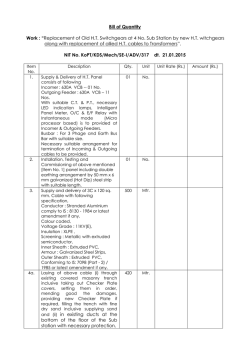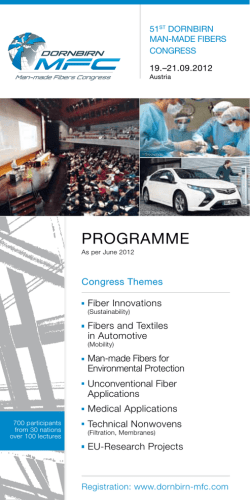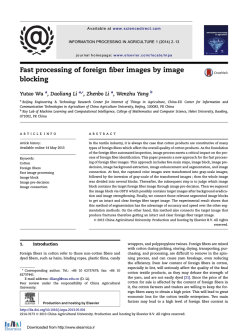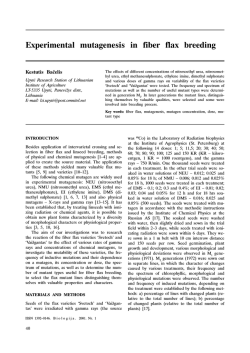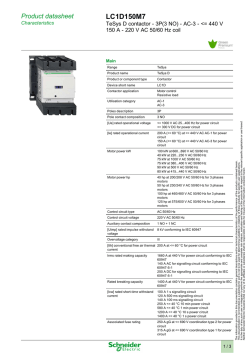
Download White Paper
THE ELEMENTS OF FIBER CABLE MANAGEMENT BROADBAND NETWORK SOLUTIONS /// THE ELEMENTS OF FIBER CABLE MANAGEMENT The Elements of Fiber Cable Management As service providers upgrade their networks to transport high-bandwidth broadband services, an increase in fiber usage is essential to meet both bandwidth and cost requirements. But just deploying this additional fiber is not enough – a successful, wellbuilt network must also be based on a strong fiber cable management system. Proper fiber management has a direct impact on the network’s performance, stability, reliability and cost. Additionally, it affects network maintenance, operations, expansion, restoration, and the rapid implementation of new services, ideally without disturbing the transmission in other active circuits. The four primary elements of a strong fiber cable management system provides: • Storage and protection of fibers, splices, connections, passive optical components, cables • Fiber and cable routing paths with bend radius control • Modular circuit separation (to reduce transient losses in adjacent groups of optical circuits) • Fiber and cable identification and accessibility Executing these concepts correctly will enable the network to realize its full competitive potential. With strong demand steadily increasing for broadband services including several bandwidth-hungry technologies such as high-definition television (HDTV) and higher Internet speeds for larger file sharing requirements, fiber is pushing closer and closer to the customer premises. This, in turn, creates a need for additional fiber in the central office (CO) /data center and for active equipment that must be managed to accommodate future network growth. Any new broadband network infrastructure must have the inherent capability to easily migrate to the next generation of technologies and services. This is a key consideration for any provider of triple-play broadband services – whether it’s from the multiple service operator (MSO) headend, a CO, or a wireless mobile switching center (MSC). As the amount of fiber dramatically increases, the importance of properly managing fiber cables becomes a more crucial issue. The manner in which fiber cables are connected, terminated, routed, spliced, stored, and handled will directly and substantially impact the network’s performance, stability and, more importantly, its profitability. The four fundamental elements of fiber cable management – physical and environmental protection, circuit separation, cable routing paths with bend radius control, accessibility and identification – will be discussed in Without proper physical protection, fibers are susceptible to uncontrolled bends which cause transient this paper, as well as new technologies and products developed in the last few years to improve these elements. optical losses and damage that can critically affect network performance and reliability. Storage and protection Fiber and cable routing paths with bend radius control A fiber management system provides storage and protection (both physical and environmental) of the installed fibers, splices, connectors and passive optical components. Every fiber throughout the network must be protected against accidental damage by technicians or by equipment handling. Fibers traversing from one piece of equipment to another must be routed with physical protection in mind, such as using raceway systems that protect from outside disturbances. Uncontrolled bends in fibers or cables can affect the fiber network’s longterm reliability and performance. Uncontrolled bending of fibers is often caused during handling of the fibers. As the bend occurs, the radius can become too small and allow light to escape the core and enter the cladding. The result is an increase of attenuation at best and, at worst, the signal is decreased Spectral macrobending loss of G652D fiber for 10 loops 4 3.6 MFD (1310 nm): 8.9µm …9.5µm 3.2 Loss (in dB) Introduction 2.8 R 2.4 Radius 10mm 2 1.6 Radii ≥20mm 1.2 0.8 Radius 15mm 0.4 0 1250 1300 1350 1400 1450 1500 1550 1600 1650 Wavelength (in nm) Figure 1: Wavelength dependence of macrobending loss BROADBAND NETWORK SOLUTIONS /// THE ELEMENTS OF FIBER CABLE MANAGEMENT The Elements of Fiber Cable Management or completely lost due to a mechanical fiber fracture. These macrobends can, however, be reduced and even prevented through proper fiber handling and routing in a fiber management system. The attenuation caused by macrobending is wavelength dependent (see Figure 1). For the same bend, the increase in attenuation will be higher for the longer wavelengths. As specified in the standards IEC 61756-1 [1] and ITU-T L.13 [2] the recommended minimum permanent storage radius for the conventional single-mode fibers (ITU-T G652D) is 30 mm, however, in local cases a radius of 20 mm is allowed (for example a bend at a connector boot). The minimum bend radius of a cabled fiber will vary depending on the cable construction. In general, the minimum bend radius of a cable should not be less than ten times its outer diameter. Thus, a 5-mm cable should not have any bends less than 50 mm in radius. Also, if a tensile load is applied to a fiber cable, such as the weight of a cable in a long vertical run or a cable pulled tightly between two points, the minimum bend radius is increased due to the added stress on the fiber. The advent of bend insensitive fiber according to ITU-T G.657 [3] is an example of how technology has addressed the bend radius issue and associated attenuation. Whereas the minimum bend radius should not be less than ten times the outer diameter of the fiber cable in typical fiber, bend insensitive fiber provides more leeway. A bend insensitive fiber can be bent with a 30-percent smaller radius compared to the conventional single-mode fiber without additional attenuation penalty. This allows the reduction of the size of fiber management systems for FTTH applications where a recommended minimum bend radius of 20 mm is used and in some limited cases a 15 mm radius is allowed (for example in wall outlets). Some bend insensitive fibers (ITU-T G.657B3) are specified with a bend radius of 5 mm, which makes these fibers ideal for customer premises cabling. However, care must be taken; for such small bends the mechanical failure probability Expected mechanical reliability of fiber lines in various network locations Wall outlet Terminal Core Long Haul Trunk Junction Metropolitan Drop Access network Splitter cabinet Distribution network Building distribution box Very high reliability Failure probability targets per fiber line < 10-7 over 20 years for core networks Impact of a failure is severe (>1000 customers affected) High reliability Acceptable reliability Failure probability targets per fiber line < 10-6 over 20 years for access networks. Impact of a failure is relative severe (less than 64 customers affected) Failure probability < 10-5 over 20 years - frequent re-entries expected - smaller fiber bend radii for smaller products - cost effective - impact of a failure is less severe Figure 2: Expected mechanical reliability in various optical networks will increase dramatically. For FTTH customer premises cabling, a mechanical failure probability of 10-5 is considered acceptable, but for long haul networks a failure probability of minimum 10-7 is required since one failure could affect the transmission of several thousand customers (see Figure 2). However, service providers must understand that these new ITU-T G.657 fibers do not diminish the need for solid fiber cable management. On the contrary, the increase in the sheer number of fibers being added to the system to accommodate broadband upgrades makes bend radius control as important as ever. Additionally, the future NG-PON2 systems will use transmission wavelengths up to 1625 nm, which makes the fibers very sensitive to macrobending at these wavelengths. As fibers are added on top of installed fibers, macrobends can be induced on the installed fibers if they are routed over an unprotected bend. A fiber that had been working fine for many years can suddenly have an increased level of attenuation, as well as a potentially shorter service life. Although bend insensitive fiber is an innovative breakthrough addressing the issue of bend radius protection, it may be some time before service providers replace existing fibers with a bend insensitive variety of fiber. Meanwhile, the importance of bend radius protection is critical to avoid operational problems in the network. Improper routing of fibers and cables by technicians is one of the major causes of bend radius violations. Wherever fiber is used, routing paths must be clearly defined and easy to follow – to the point where the technician has no other option than to route the cables properly. Leaving cable routing to the technician’s imagination leads to an inconsistently routed, difficult-to-manage fiber network. The quality of the cable routing paths, particularly within a fiber distribution frame system, can be the difference between congested chaos and neatlyplaced, easily accessible, patch cords. It’s often said that the best teacher in fiber routing techniques is the first technician to route it properly. Conversely, the worst teacher is the first to use improper techniques since subsequent technicians are likely to follow his lead. Well-defined routing paths, therefore, reduce the proficiency training time required for technicians and increase the uniformity of the work done by ensuring and maintaining bend radius requirements at all points to improve overall network reliability. It is important to note that, again, the use of bend insensitive fiber does not diminish the need for clear cable routing paths – there are benefits that go beyond bend radius protection. Defined routing paths make accessing PAGE 3 The Elements of Fiber Cable Management Change in attenuation when handling an active fibre 0.5 0.0 -0.5 Short duration -1.0 Fast transition -1.5 Fiber identification and cable access High attenuation -2.0 -2.5 -3.0 -3.5 0 0.5 1 Time ( seconds ) 1.5 2 Figure 3: Transient optical loss individual fibers easier, quicker and safer – reducing the time required for reconfigurations. Fiber twists are seconds. The transient loss should be reduced to a level below 0.5 dB to avoid transmission errors (or bit reduced so tracing a particular fiber for rerouting is much easier. Even with new technologies, such as the use of connection point identification (CPID) at both ends of patch cords for easy identification, well-defined cable routing paths still greatly reduce the time required to route and reroute patch cords. All of this directly affects network operating costs and the time required to turn up or restore service. errors) in an active optical circuit. Modular circuit separation system The easiest way to increase fiber capacity is to add as many fibers and cables as possible in the equipment. This results in splice trays with more than 96 splices per tray. The drawback of such mass storage systems is that during an intervention by a maintenance crew, many fibers or cables will be touched, either intentionally or by accident. The probability of an uncontrolled fiber bend becomes high, resulting in rapid changes in attenuation, also called “transient losses”. Figure 3 shows a typical transient loss recorded when an installer handles fibers. The effects of transient optical losses on the transmission quality has been described in many papers [4] [5] , . Transient optical losses are fast changes in attenuation up to 10 dB with a duration from 1 ms to several are typically used. In the distribution points of an access network, where frequent reentry is expected over the lifetime of the product, the SC and SE splice trays are employed. In network locations that require frequent interventions, such as the access network, it makes sense to separate the optical fiber circuits by storing the fibers on individual splice trays. This reduces the occurrence of transient optical losses in adjacent circuits. Circuit separation is defined and described by the international standards IEC 61756-1 [1] and ITU-T L51 [6]. The following separation levels are defined: • Single circuit (SC): only the fibers of one customer per splice tray • Single ribbon (SR): only one ribbon per splice tray • Single element (SE): all fibers from a cable element (e.g. a loose tube) per splice tray • Multi-element (ME): fibers from multiple cable elements on one splice tray (also called mass storage trays) A fiber management system should allow modular combination of splice trays with the above mentioned circuit separation levels. Depending on the application, the type of splice tray can be changed. For example, in a long distance network where cable segments are spliced together (in track joints) and where closure reentry is not expected, the SE and ME splice trays BROADBAND NETWORK SOLUTIONS /// THE ELEMENTS OF FIBER CABLE MANAGEMENT Cable access and identification is another important element to good fiber cable management and refers to the accessibility of the installed fibers. As the number of fibers grows dramatically in both the distribution frame and the active equipment, cable access becomes an increasingly important issue for broadband service providers. In the past, an active equipment rack might have had about 50 fibers exiting, and managing those fibers was much less of an issue. But as that same rack is fitted for next generation broadband services, there may be as many as 500 fibers involved, making proper management, identification and accessibility a vitally important matter. Using SC and SE circuit separation levels will help identify the correct fiber circuits. With huge amounts of data – as well as revenue – moving across those fibers, the ability for technicians to have quick, correct and easy access is critical. When there are service level agreements in place, particularly for customers with high priority traffic, the last thing any service provider wants is service interruptions caused by mishandling one fiber to gain access to another. As previously mentioned, there are patch cords designed today with connection point identification (CPID) at both ends to help technicians identify particular cable runs with no chance of error. These innovations can be implemented into a good cable management system to minimize problems caused by disconnecting the wrong patch cord. There are many other tools and techniques for ensuring that every fiber can be installed or removed without bending or disturbing an adjacent fiber. The accessibility of the fibers in the fiber cable management system can mean the difference between a The Elements of Fiber Cable Management network reconfiguration time of 20 minutes per fiber and one of over 90 minutes per fiber. Since accessibility is most critical during network reconfiguration operations, proper cable access directly impacts operational costs and network reliability. A final word – planning Finally, since many service providers are in the process – or soon will be – of upgrading networks for delivery of high-bandwidth broadband services, it is important to stress the need for planning in terms of fiber and cable management. Today’s network is a living and growing entity – and what is enough today will almost certainly be too little for tomorrow. With that in mind, futureproofing the network wherever possible should be a major consideration – and fiber cable management is no different. For example, the current upgrades to broadband service delivery taking place in COs, MSOs, or MSCs requires more fiber deployment. Four- and six-inch (102mm and 132mm) fiber raceway systems are quickly becoming inadequate to properly manage larger amounts of fiber. Service providers must plan ahead for a centralized, highdensity fiber distribution frame lineup using 24-inch (610mm) raceways that not only accommodate today’s fiber requirements, but also those expected in the future. Although installing a 24inch raceway system is more expensive today, the cost of going back in and retrofitting the system in a few years represents a much higher cost and significant risk to the fiber. Ignoring future growth, particularly in terms of fiber, will result in higher long-term operational costs resulting from poor network performance or a requirement to retrofit products that can no longer accommodate network demand. Another consideration in planning for good fiber cable management concerns the active equipment rack. Most manufacturers have traditionally overlooked the need to provide cable management within their active equipment. Before purchasing, service providers should insist that cable management is included within every piece of active equipment to ensure their investment will operate at peak efficiently over time. References [1] IEC 61756-1 Fiber optic interconnecting devices and passive components - Interface standard for fiber management systems - Part 1: General and guidance [2] ITU-T L.13 Performance requirements for passive optical nodes: Sealed closures for outdoor environments [3] ITU-T G.657 Transmission media and optical systems characteristics –Optical fiber cables. Characteristics of a bending-loss insensitive single-mode optical fiber and cable for the access network [4] D. Daems, “Effects of Transient Optical Loss in STM-64 Transmission Systems,” NFOEC Proceedings, Vol. 1, 290 (2002). [5] John W. Peters and Osman S. Gebizlioglu, “FDF operations testing: transient optical loss and BER (Bit Error Ratio) measurements. NFOEC Proceedings, Vol. 4, 1218 (2003). [6] ITU-T L.51 Passive node elements for fiber optic networks – General principles and definitions for characterization and performance evaluation DANIEL DAEMS Daniel Daems received his M.S. degree in Electromechanical Engineering at the Polytechnic Institute of the Free University of Brussels (VUB), Belgium in 1982. He joined the company Raychem in 1988 and was involved in the development of optical fiber management systems and closures suited for outside plant applications. He is currently Senior R&D Department Manager of the Fiber Optic Technology and Standards Department at TE Connectivity in Belgium. He is Chairman of IEC SC86B (Fiber optic interconnecting devices and passive components) and Convenor of the Cenelec (European standards) TC86BXA WG2 for fiber optic enclosures. PAGE 5 te.com TE Connectivity, TE connectivity (logo) and Every Connection Counts are trademarks. All other logos, products and/or company names referred to herein might be trademarks of their respective owners. The information given herein, including drawings, illustrations and schematics which are intended for illustration purposes only, is believed to be reliable. However, TE Connectivity makes no warranties as to its accuracy or completeness and disclaims any liability in connection with its use. TE Connectivity‘s obligations shall only be as set forth in TE Connectivity‘s Standard Terms and Conditions of Sale for this product and in no case will TE Connectivity be liable for any incidental, indirect or consequential damages arising out of the sale, resale, use or misuse of the product. Users of TE Connectivity products should make their own evaluation to determine the suitability of each such product for the specific application. © 2014 TE Connectivity Ltd. family of companies All Rights Reserved. 319842 01/15 Original BROADBAND NETWORK SOLUTIONS /// THE ELEMENTS OF FIBER CABLE MANAGEMENT WHITE PAPER TE Connectivity Broadband Network Solutions - EMEA Diestsesteenweg 692 3010 Kessel-Lo, Belgium Tel 32-16 351 011 www.te.com/bns Tyco Electronics Raychem bvba, a TE connectivity company.
© Copyright 2025

